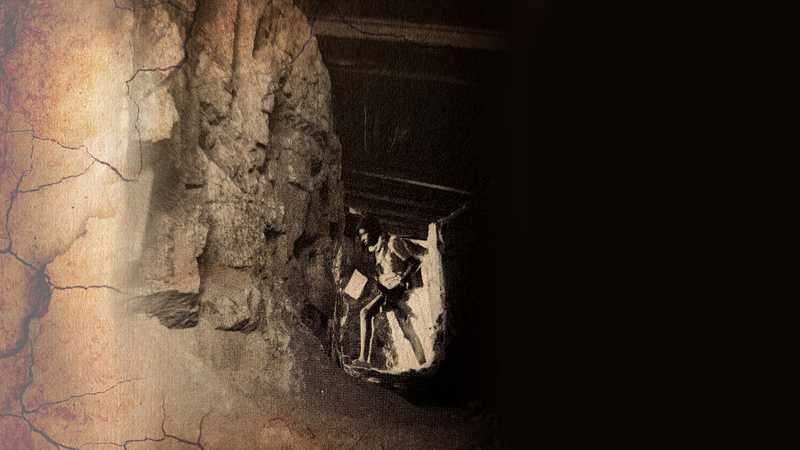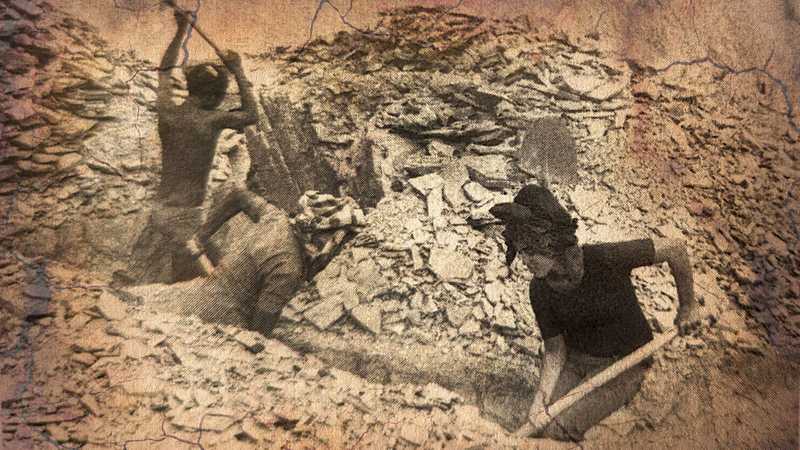Ethiopian Derg Government 5th Military Offensive Against EPLF
14 Jul, 1979 - 26 Jul, 1979
The Ethiopian Derg Army launched its 5th campaign aiming to split EPLF's defense lines for double-encirclement and cut supply lines to the Nakfa Front in July 1979.
 EPLF freedom fighter looking out from a shell-proof dugout
EPLF freedom fighter looking out from a shell-proof dugout
The Ethiopian military Derg regime launched its fifth major offensive against the Eritrean People’s Liberation Front (EPLF) in July 1979, following the failure of its previous campaigns. This invasion, which lasted from July 14-26, targeted the northern province of Sahel and the strategic town of Nakfa.
Preparations for the Offensive
After the Derg’s fourth invasion failed earlier in 1979, the regime spent three months preparing for another large-scale attack against the EPLF. The Derg aimed to exploit perceived weaknesses in the EPLF’s defenses before launching its fifth offensive.
The Derg focused on strengthening its existing Task Force units 503, 505, 506-A and 508 with recruits from militia and army units stationed outside Eritrea. However, the composition and structure of these units remained largely unchanged from the previous invasion.
Objectives and Battle Plans
In its fifth offensive campaign, the Derg sought to stretch EPLF forces thin by launching attacks on multiple fronts. Key objectives included:
- cut off the road at Agra’e that connects the rear base to the Nakfa front
- attack Nakfa from the back and annihilate the Nakfa front
- attack northeast Sahel from the back and annihilate the Northeastern Sahel Front
The Derg devised a plan to encircle and besiege EPLF units on the Nakfa front from three sides.
Task Forces 506-A and 508 would launch frontal assaults to pin down EPLF units defending Nakfa.
Task Forces 503, which consisted of 3 infantry brigades and the 28th Mechanized Brigade, was split into two detachments. The first would trek on foot and scale Mount Mend’at northeast of Nakfa and descend to Hdaq to control the Agra’e plains. This maneuver would cut the main supply line to Nakfa.
The second detachment of the the 503rd was to turn south and rendezvous with the 505th which would attack from the direction of Algien. This detachment would follow the supply line south to Nakfa through Hmed Dibelai. This would leave the EPLF units at Nakfa dangerously exposed from the rear.
Since this would split the frontlines at Nakfa and Northeastern Sahel, EPLF risked double encirclement. The Derg had planned that if this did not play out as planned, then at least form a permanent foothold at Hadq, Agra’e and Afchewai completely cutting off both frontlines.
Additionally, the Derg planned to airdrop troops at Afchewai, deep in the rear base, to interdict EPLF supply lines to Nakfa. Capturing Afchewai would leave EPLF forces at Nakfa dangerously exposed.
In addition to the above, the 503rd Sub-task Force was also redeployed from the Asmara-Massawa road by landing it Marsa Gulbub and bringing it to Felket via Afabet and Kubkub. Its objective became clear when it reached Deb’at on July 11.
EPLF Preparations
Assessing the scale of the upcoming offensive, EPLF redeployed most units that were operating behind enemy lines and were stationed in areas deemed vulnerable to enemy attack.
No changes were made to how the EPLF regiments were arrayed in the 4th enemy campaign but extensive structural reinforcement of trenches, tunnels and dugouts was undertaken. Trench lines were designed to have overlapping and covering fire lines to protect each other. Zones were also set up where reserve forces could safely hanker down until needed.
 EPLF freedom fighters digging defensive trenches against Ethiopian Derg offensive
EPLF freedom fighters digging defensive trenches against Ethiopian Derg offensive
The Invasion and Its Aftermath
On July 14th, the Derg launched its multifront attack on Nakfa, preceded by intense bombardments. While pretending to stretch the frontline to the right of Denden, it unleashed a fierce attack at Fernello where the 77th Brigade was defending. EPLF defended and pushed back all the frontal attacks.
On the main prong of the offensive, accompanied by an intensive covering artillery barrage, the 503rd-B Sub-task Force started its attack from Deb’at and controlled the high points north of Nakfa at Debre Tlul and Mount Me’dne. However, its dogged attempts to descend and cease the plains of Agra’e and subsequently cut the main Nakfa supply line were foiled by stiff resistance from EPLF units.
After days of heavy fighting, as the invasion started to wane, a counterattack by EPLF forces on July 22nd resulted in the death of Col. Ca Gebremariam, commander of the 503rd Task Force. His unit, which attacked from the south, was virtually annihilated. This marked the effective failure of the Derg’s encirclement plan.
Although the Derg continued small diversionary attacks around Nakfa in subsequent days, the outcome of the invasion was already determined. Ethiopian forces suffered heavy losses forcing their retreat by July 26th.
The fifth military offensive’s repeated flanking maneuvers on the right of the frontline ended up stretching the lines past Fernello, all the way to Swara.
